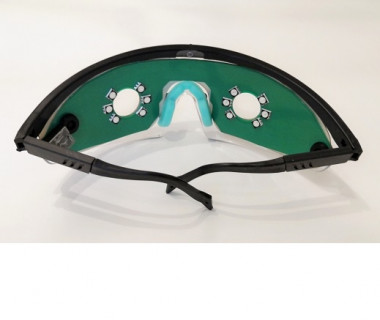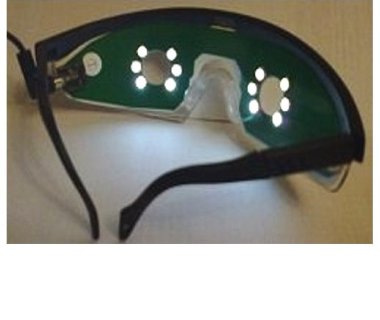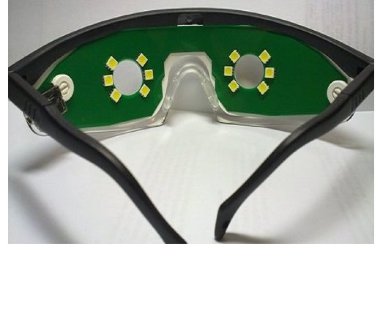Mon—Fri 11:00—17:00 Sat. 12:00—16:00

Description
After payment, a download link will be sent by e-mail.
According to modern concepts, the human psyche consists of: the unconscious, subconscious, conscious and supraconscious parts (minds).
The unconscious rules the body. All basic instincts, reflexes are “located” there, “ETROPs” (emotional traumatic experience) that we have gained through life, and all our memory (“raw sensations”), recorded as on a tape on each sensory organ, are “stored”.
The subconscious mind controls emotions. Our life experience “lies” there - our memory (“raw sensations”) processed by our emotions, that is, our reaction to events (value judgments). And, accordingly, our values, beliefs, beliefs and prejudices.
Consciousness controls the current behavior, depending on the current context. Our RAM, our thinking and a certain set of personal variable rules of behavior are “located” there.
Superconsciousness is a kind of interface designed to communicate with the universe, with God. It provides access to the universal principles on which our universe is based.
In evolutionary terms, the oldest (the strongest and largest, in terms of representation in the brain) is the unconscious part (unconscious mind).
Over billions of years of evolution, the unconscious mind has acquired a huge number of survival mechanisms, including various psychic abilities. Unfortunately, these mechanisms do not always work adequately in social terms, sometimes forcing us to act in society, as in the wild.
This meditation of the presence of “Connection with the body” creates the conditions in which it becomes possible to remove various negative symptoms and relieve stress - despite the fact that the meditation does not contain any specific instructions or suggestions in this regard.
The distribution of attention to an objectless distance, region or space of the body makes it possible to release the unconscious sensations, perceptions, memories, feelings and emotions that are stored in this area of the body. Thus, the focus of attention of a person expands without effort.
This usually leads to the fact that a person’s migraines associated with stress and tension headaches, as well as other pains in the body, including a high level of intensity, disappear even though no exercises are given during exercise specific suggestions of relaxation or relaxation. The stress level is significantly reduced - even in the absence of specific instructions, people who have constantly cold hands (one of the clear signs of stress) begin to feel warmth in them.
In many people, over time, high blood pressure and heart rate begin to decrease. People who practice these exercises note a general decrease in anxiety and tension - again, even though no suggestions are included in the exercises that could cause this effect directly. A side effect of this meditation is the clarification of the various signals of intuition that come to us from the unconscious mind.
Your opening awareness of all manifesting experiences is a process that unfolds over time, and it will develop and change throughout the current session and subsequent sessions.
Be Healthy and Happy!
Andrey Patrushev and Vladimir Nikonov
Your feedback will be greatly appreciated.
Methodology
In these meditations, I, as in the previous ones, will ask questions: “Could you ...” The questions asked in this form help to circumvent current restrictions, making it possible for the subconscious to find the conditions under which the fulfillment of what has been said becomes possible (although not always the first time).
There will be 15 seconds between questions, and at this time it is necessary to keep soft friendly attention on the subject of the last question.
Important:
The training exercises are designed to increase the scope of attention and increase its flexibility. However, focusing on a goal that involves effort — that is, when a person struggles to do or imagine what they are asking for, will reduce the effectiveness of the practice. This practice will be most effective when you allow yourself to effortlessly respond to an answer and accept any response that you may have spontaneously. During the session, you should not take responsibility for the result of the practice.
Any effort will be counterproductive in the sense that this effort will be felt by a person more than the feeling of absence, which is characteristic of space - the sensory feeling of effort overshadows the feeling of absence.
Your task is to let your imagination do all the work very naturally, which, of course, does not require any effort. When your imagination acts completely freely, and you DO NOT force him to imagine something, but simply let it happen, then the imagination acts most creatively.
For example, to the question: “could you imagine the distance between your eyes”, you can naturally feel your eyes, and then allow your imagination or focus of attention to feel the part of the body that is between the eyes and imagine this area, or volume, or space, or the distance between the eyes.
The task is not to get some kind of figure or other abstraction, but to very softly feel or imagine this distance or the area between the eyes. The purpose of the exercise is to give you an incentive - to feel the physical or emotional sensations that are present in a given area of the body corresponding to the current issue. Questions are offered in such a way as to create favorable conditions for the listener, allowing him to feel the sensations in certain areas that are “responsible” for those or other experiences.
At first you can imagine or feel the distance as a very small area, or a weak feeling, and then this distance can expand, or change as you continue to maintain your soft friendly attention in this area. With practice, these feelings often change.
If you are having difficulty imagining an image or feeling, do not worry about it. Let your sensations evolve in a natural way, without extra effort: do not try to make sure that they correspond to the prejudices that you may have.
If nothing seems to happen to you, or your mind starts to wander, do not worry. This often happens in the early stages of learning and even in the later stages of various meditation practices.
In the event that you notice that your attention wanders and focuses on some thoughts, images or other feelings, you should neither resist nor strengthen this process. Just let your focus of attention expand to include the awareness and sensations arising from the current question, in addition to the direction your mind is now headed.
As in the case of other techniques that create favorable conditions for self-integration (healing - achieving integrity), practitioners of any presence meditation often notice the so-called "release phenomenon" ("autogenic discharges"). It can be expressed as in the relief of pain, twitching, tremors, numbness or tingling, changes in temperature, fatigue, anxiety, increased sweating, an apparent increased heartbeat (it just becomes suddenly audible), an apparent change in size (or (and) temperature), the whole body, and its individual parts, thoughts, memories, feelings or emotional experiences (even sexual orgasm) that begin to spontaneously enter the consciousness.
The emergence of the release phenomenon indicates that practice effectively leads to the disappearance of blocks and stress. When such feelings arise, just watch them without ratings, and include them in your circle of soft friendly attention, along with the answer to the current question.
Sometimes these feelings can be quite unpleasant. You can feel boredom or impatience, anxiety or depression, you can feel pulling or itching sensations in the body, you can feel very tired - because you did not understand how tired you were before you started to meditate. All this is quite normal, and I ask you to allow these feelings to live, if they arise.
You can also feel very relaxed and wonderful, so I only mention the negative consequences in case they arise - so you will know what to do and you will know that these are normal phenomena.
So, if any of these unpleasant sensations arise, which we call the “phenomenon of liberation,” just stay in these sensations and let them be where they arose. Do not try to get rid of them, do not try to encourage them. Let them just exist.
It should be noted that most practitioners do not feel intense release phenomena. The practice and integration process they develop gradually and constantly. However, if, as a result of the release phenomenon, you feel too uncomfortable, then you can end this session and return to practice later. But since such a release provides an opportunity for integration, then you should not end the session in this way, except when it becomes "completely unbearable".
In any case, between sessions and during subsequent sessions, integration will occur spontaneously. The less you resist sensations, the more you can expand your attention to include this sensation, space and other sensations - and the more pleasant, quick and complete the integration process will be.
These meditations can be done with both eyes closed and open. At the initial stage, closed eyes can help focus on the sensations, but as you gain meditative experience, it is recommended to engage with open eyes in order to transfer the experience of meditation into everyday life.
The second meditation is just a shorter option (for those who want to save time), where all the auxiliary instructions that you can learn by practicing the long version several times are removed.
These meditations are self-sufficient, but each subsequent meditation in this series of Meditations of Presence is a little more complicated than the previous ones. Therefore, it will still be better if you first complete the full course (21 days) of basic meditation. It will be useful for someone to complete the full course of all previous presence meditations first.
Each meditation in the Presence Meditation series involves some unique aspect of your perception. Therefore, successive classes by everyone (preferably in the order in which they appeared on the site) give a systemic synergistic effect.
Once again, I would especially like to emphasize that meditation is not hard work, but a game. During meditation, keep your inner smile, breathe deeply (effortlessly) and evenly and play with your ideas, as if half asleep, or in dreams.
In order to transfer the effects of presence meditation in everyday situations, during meditation, it is recommended to sit with your back straight or to stand. A recumbent or inclined position, after a certain period of practice, will be ineffective, as this resembles the position in which you are sleeping.
It is optimal to do it twice a day, (with a break between sets of at least three hours). It should be noted that “twice a day” is a recommendation, not a dogma. In meditation, regularity is very important (especially for beginners), not the amount of time spent.
Water plays an important role in conducting nerve impulses. With general dehydration, which is very common among urban residents, a headache may occur after listening. Therefore, I recommend that before meditation and immediately after drink a glass (well, at least half) of plain clean water.
You can do these meditations on your own (from memory - without sound accompaniment), during the day - in transport, in queues, at breaks at work, while performing any simple automatic activity - washing dishes, floors, cooking, etc. d.
It is strictly forbidden to engage in meditation while driving, or when controlling any potentially dangerous mechanisms.
The first positive changes will be noticeable after three weeks of regular classes. The consolidation of positive changes will occur in three months.
Duration of meditation: MP6 (1) - 36 minutes, MP6 (2) - 25 minutes.
Using headphones is optional.









